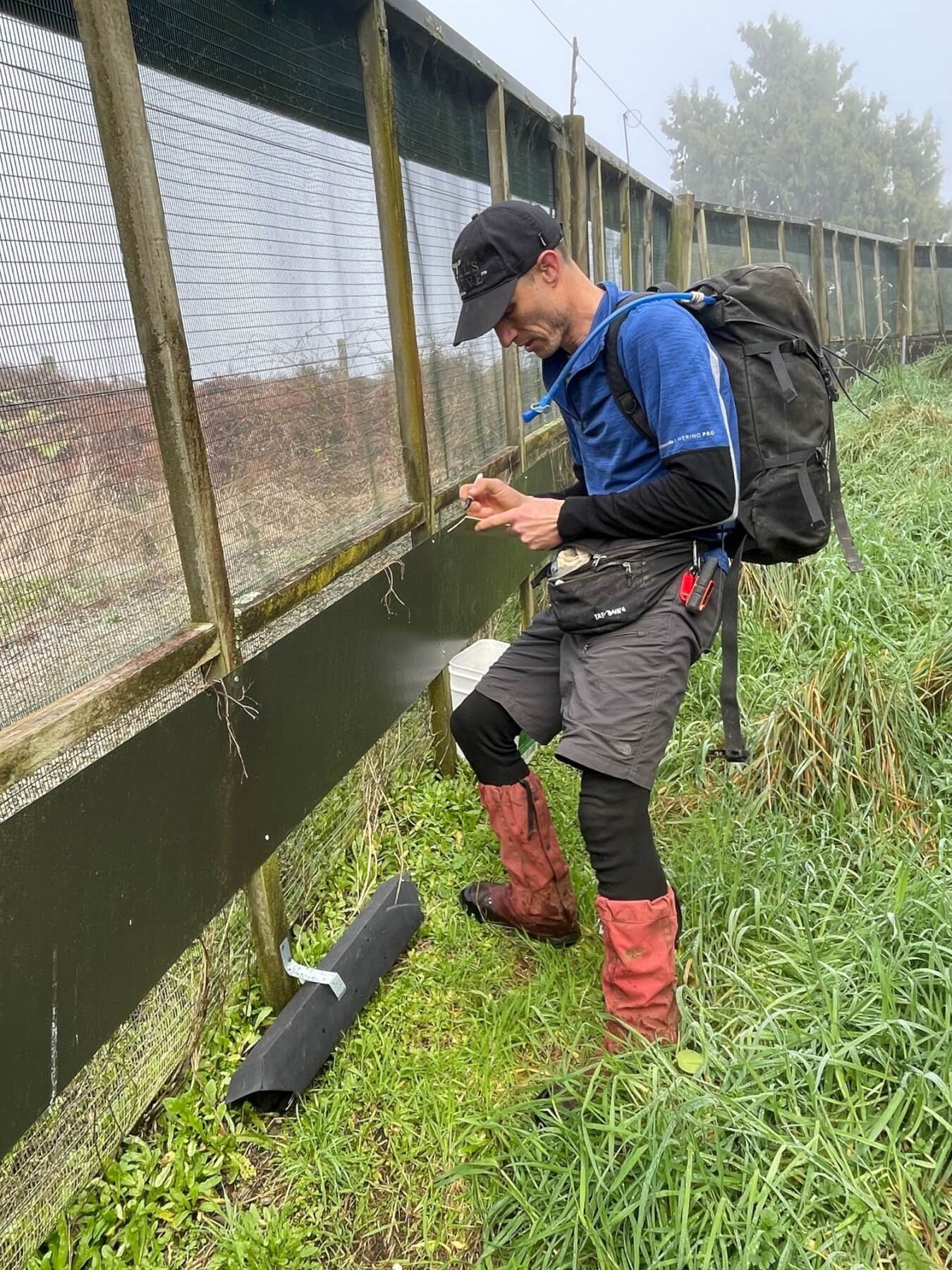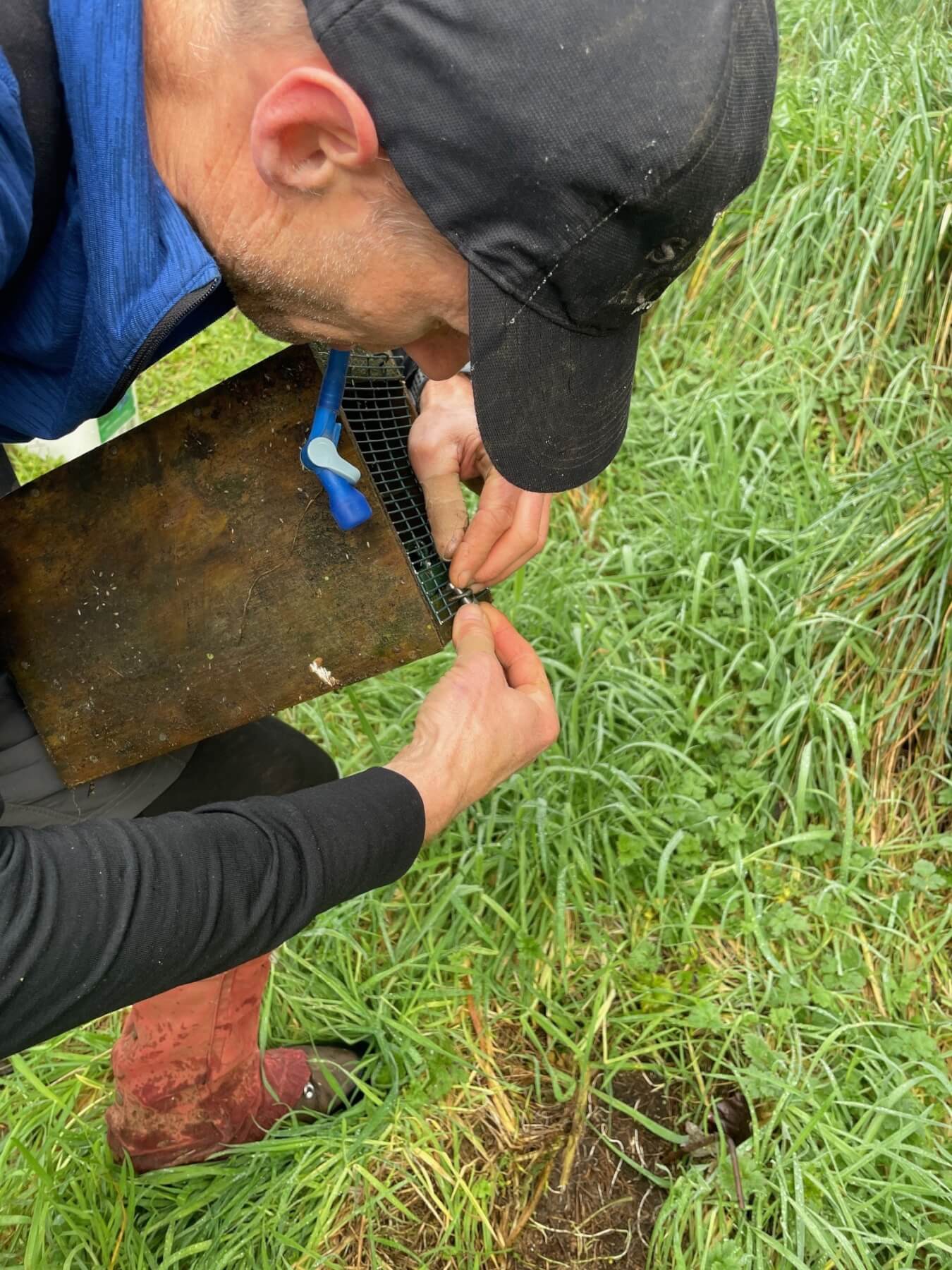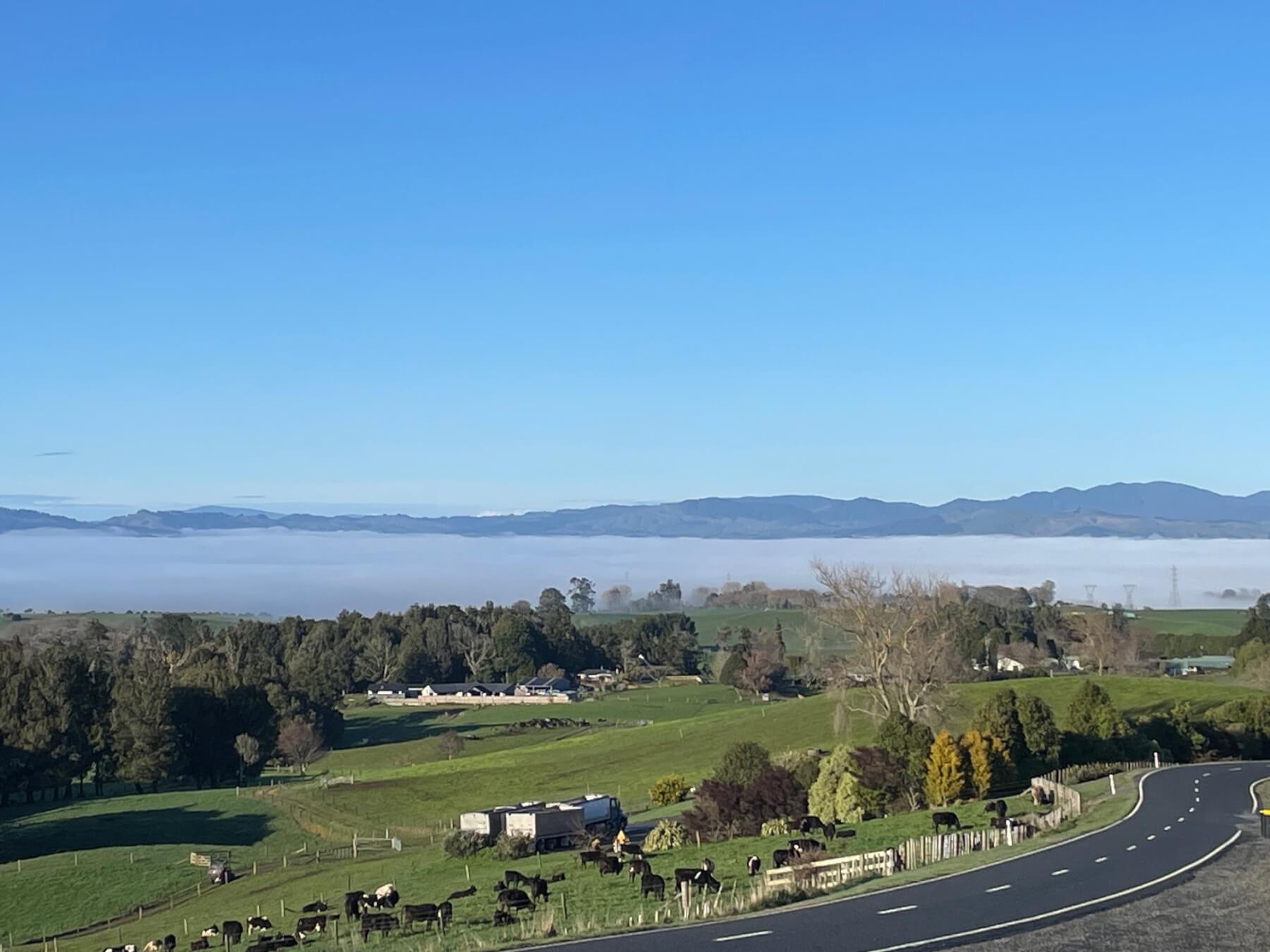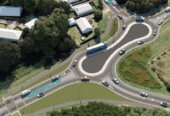Sanctuary Mountain Maungatautari ranger Warwick Prewer has joined the at-risk species he’s been protecting for years.

Maungatautari Mountain Ranger Warwick Prewer prepares a tracking card. Photo: Chris Gardner
Warwick is one of eight rangers whose job it is to protect the many endangered species living within the world’s largest predator proof enclosure on Sanctuary Mountain Maungatautari.
“My job comes to an end at the end of July,” he tells me as we drive out for a day on the mountain.
“It’ll finish when DOC’s Jobs 4 Nature fund dries up, but Maungatautari Ecological Island Trust has managed to find funding for two more months.”
The Department of Conservation, Waipa District Council and Waikato Regional Council clubbed together about 20 years ago to provide baseline funding for what became a world leading ecological project. But its future is now precarious after DOC changed its funding model and withdrew baseline funding. DOC has continued to support the project with targeted funding allocated to specific projects, like Jobs 4 Nature.
I meet Warwick and a fellow ranger at the Southern Enclosure.
“I’ve seen you before,” he quips. Last time I visited the project Warwick shared his map showing the location of a kiwi sign.

Maungatautari Mountain Ranger Warwick Prewer prepares a tracking card. Photo: Chris Gardner
We drive 20ish km around the mountain towards the Northern Enclosure before boarding a light utility vehicle for the last 900 metre farm track ride to the fence.
It’s a cold day, and we’re layered up with thermal base layers, mid layer insulation, waterproof jackets, hats and gloves.
It’s also wet underfoot, sturdy boots are essential, and Warwick is also wearing waterproof socks and gaiters.
“A week ago, two trail cameras saw what looked like different rats at different locations, one at 80A and the other at 67A” Warwick says.
The alpha numeric designations pinpoint locations on the mountain’s grid system.
Our mission, for the day, is to check DOC rat traps, tracking tunnels and bait stations every 50 metres within a designated section of the grid.
Our walk will take us along the inside of a section of the world’s longest predator proof fence. Every 100 metres we will bush bash our way 200 metres deep into thick and unspoiled bush. On occasions we will cross waterways, ankle to knee deep, and check the water gates that let water flow off the mountain have not been lodged open by branches or other debris.
“We check the lines weekly,” he says. On occasion they find the odd rat.
“If there’s no detection after six weeks, we assume that the rat’s dead or climbed out of the enclosure.”
Warwick’s switched from securing rat trap door latches with nails to small nuts and bolts. Maungatautari’s fledgling population of three kākāpō had learned how to remove the nails.
Occasionally we find a tracking tunnel where the ink-soaked tracking card is missing, likely dragged into the bush by wildlife for the small dollop of peanut butter bait. So those cards need replacing.
“Just a little bit of peanut butter,” Warwick says. “That’s the lure, and we don’t want to feed them too much.”
Warwick also replaces the batteries in tracking cameras connected to motion detectors.
“We got $3000 worth of funding from Waipā District Council for seven of these cameras on internal lines as a way of reducing our tracking card waste,” he says. “We’ve got 38 around the fence line and 17 in the bush, and we probably want another 40.”
“They’ve been really successful, with 36 detections per 100 devices on trail cameras compared to about 10 detections per 100 tracking card devices.”
We stop around mid-day for a break, Warwick shares his coffee, I share the Tararua biscuits I made the night before.
Warwick’s been involved at Maungatautari for years, starting a decade ago as a volunteer. It was the perfect training ground for him to get some professional qualifications under his belt through the New Zealand Outdoor Instructors’ Association (NZOIA).
“When I was here 10 years ago, the mountain was so good for me in terms of training for Bush 1,” he says. NZOIA Bush 1 follows NZOIA Bush Leader with Overnight Endorsement.
“I could use a lot of my time identifying species, brushing up on navigation and all that. It was a formative time.”
He also achieved Kayak and Rock qualifications and worked at Castle Rock Adventures, Te Awamutu, and The Boatshed Kayaks, Cambridge.
“I’ve done some Duke of Edinburgh Award stuff in Auckland, contracting to whoever assessing at camps and schools.”
Warwick isn’t sure what he will do if funds dry up.

Maungatautari Sanctuary Mountain. Photo: Chris Gardner








